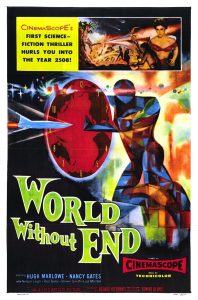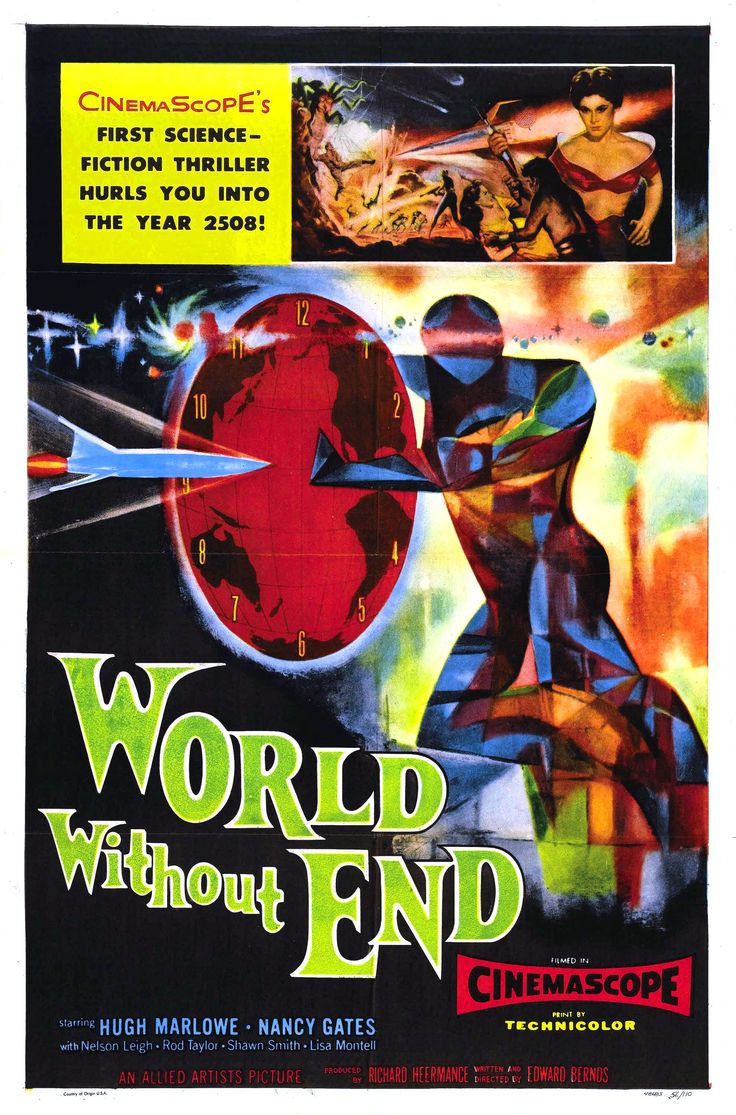
This fairly ambitious science fiction from minor studio Allied Artists used to be one of my favorite science fiction films when I was kid. This is an another one of those films I first saw on TV as kid and still recall with fondness and enjoy re-watching on video every now and then.The story of accidental time travel via space ship appealed to me. Although the idea of time travel was novel to films when it was first released in 1956, the story is obviously derived from the HG Wells novel “The Time Machine.” The fact that the time travel is accidental instead of deliberate via a time machine, the mutants live above ground instead of below it and the normal people live underground instead on the surface didn’t fool me when I was ten years when I first saw this film on TV.(I had already seen the George Pal version of THE TIME MACHINE and read the “Classics Illustrated” version of the novel.) Neither did it fool the estate of HG Wells, who filed a plagiarism suit against Allied Artists when this film was first released. I have never discovered the result of this suit however. Its somewhat ironic that both this plagiarized version of “The Time Machine” and George Pal’s authorized version made a few years later, both star Rod Taylor.
While WORLD WITHOUT END is fairly entertaining film, it can not be considered one the great classic science fiction films from the 1950’s. The film moves along a good pace, until director/writer Edward Bernds slows the story down and clutters up the film with scenes of “court intrigue.” The names given to some of the characters shows some imagination. I thought the scenes of the rocket crashing in the snow, although obvious, looked attractive. Emile LaVinge’s make up for the mutants is imaginative; no two mutants seems to have the same deformity. The Vargas designed costumes on the women are sexy. However, the mens costumes with the skull caps smacks of Flash Gorden in worst way. The giant spiders, to say the least are unconvincing. They are a gaudy blue and red color and look like pillows.
Despite the films faults, one should give credit to minor league studio Allied Artists, whom most of their previous science fiction films (and most those that came later) were low budget black and white quickies designed to fill the bottom half of a double bill, attempt to make something that would compete with the bigger budgeted science fiction movies being made by the big studios. The fact that they allowed for the added expense of shooting this film in Technicolor and Cinema Scope confirms this. Although not entirely successful, one could say that WORLD WITHOUT END was a nice try from a low rent studio.

